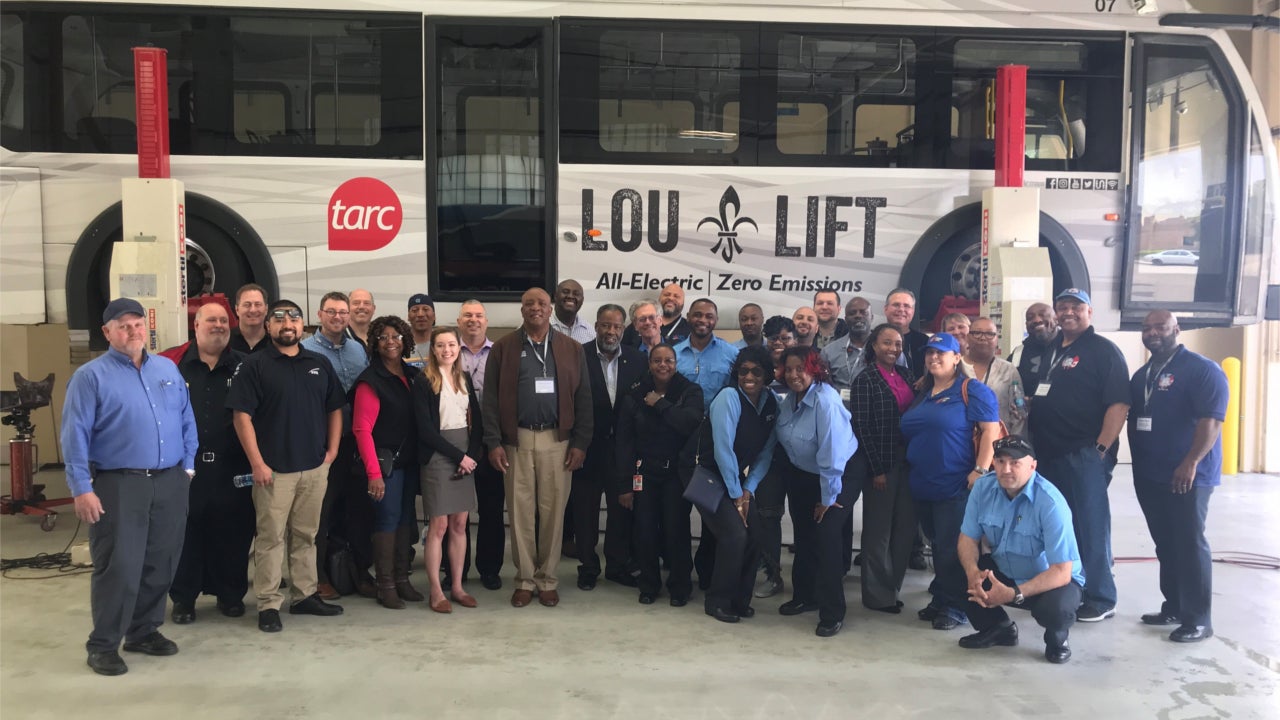In March 2019, the Workforce Strategies Initiative and UpSkill America published the Cost of Turnover Tool – a simple, “back of the envelope” calculator that estimates how much it costs a business to replace staff.
Since we published the tool, we’ve heard from business and workforce development partners across the country who are using it. They are collaborating to find ways to make the case for investments in services and strategies that strengthen job quality and boost employee retention.
We recently caught up with Theresa Meyers, Chief of Staff at DC Central Kitchen, and Karitsa Holdzkom, Project Associate at the Transportation Learning Center, to learn more about how their workforce organizations are using the tool with businesses.
Meyers’ and Holdzkom’s experiences offer ideas and insights for both business representatives and service providers interested in using the Cost of Turnover Tool. Key takeaways for service providers include:
Measuring the cost of turnover can help make the business case for investments in upskilling and other strategies that support retention. Pairing an assessment of turnover costs with information about proposed interventions can help demonstrate their potential to boost retention and cut business costs. For instance, it can be helpful to be prepared with supporting research or case studies describing past outcomes to supplement the turnover cost calculation.
Service providers can get started by using the tool within their own organizations. As DC Central Kitchen demonstrates, calculating your own cost of turnover can help you get comfortable using the tool. It can also be a starting point for conversations within your own organization, as well as with business partners, about turnover and retention.
Building trust with employer partners to use this tool can take time. Businesses may be reluctant or unable to share turnover or related cost data with an external partner. Providers may find they need to work toward completing the tool with business partners over time. An alternative could be to encourage partners to complete the tool on their own or with colleagues at their business. Providers and business representatives could then reconvene to discuss interventions to reduce turnover and boost retention.
Read more in the Q&A below in which we provide highlights of our discussions with DC Central Kitchen and the Transportation Learning Center.

Theresa Meyers, Chief of Staff, DC Central Kitchen
Theresa Meyers, Chief of Staff, DC Central Kitchen
DC Central Kitchen, based in Washington DC, runs a culinary job training program and several social ventures in the food services sector, including a cafe and catering business.
What motivated DC Central Kitchen to use the Cost of Turnover Tool?
Within the organization, we’ve been having conversations about providing coaching to our employer partners. How can we support businesses to provide good employment opportunities with advancement pathways that can help them retain our alumni? When we came across the Cost of Turnover Tool, we thought this was exactly the type of thing we could rally around.
Part of our mission is to set people up for success and change the way the restaurant and hospitality industries think about their workforce. We have the advantage of low unemployment right now – it gives us the opportunity to focus on employers who can provide great work opportunities. We’re also an employer in our own right – we run several social ventures including a cafe and catering business – so this gives us a unique perspective.
How have you used the Cost of Turnover Tool so far?
We started off by using the tool internally with our social ventures. We have about 180 people on staff, about half of whom have participated in our workforce development programs as trainees. Our turnover rate for alumni we employ is less than 20% percent, compared to an industry average above 70%.
We wanted to go through the process of calculating our own turnover costs before using the tool with other employers. That’s the next step – to use the tool with employers who hire our graduates.
Tell us more about how you’re planning to use the tool with employer partners.
Restaurant and hospitality are high-turnover industries. Our goal is to use the tool to make the case to our employer partners that retaining and upskilling their workers is good for their bottom line.
Our plan is that our career pathways manager, Tiffani Powell, will use the results as a starting point for conversations with employers about various upskilling interventions that meet their resource and time constraints. We have research and case studies we plan to bring along and distill for employers to demonstrate how investing in upskilling can benefit their business.

Have you encountered any challenges while using the Tool?
There can be hesitancy from employers to share their turnover data. So, we’re focusing on who within our organization has relationships with employers and can serve as trusted partners. In cases when an employer simply isn’t comfortable sharing their data, we’ll ask them to complete the tool with their colleagues. Then they can come back and talk with us about different retention and upskilling strategies.
What’s behind DCCK’s low turnover rate?
DCCK’s social ventures hire only full-time employees, and we offer benefits including health care and a 401(k) plan for which we provide an employer match. We start all employees at the DC living wage or higher. Managers provide growth and development opportunities, and each staff member has a professional development budget they can use at their discretion after discussion with their manager. We also have purposeful career pathways that we openly share with employees and provide opportunities for staff recognition. Our staff awards, for instance, are both bottom-up and top-down. Peers can nominate each other, and leadership can also nominate employees. And we’re working to formalize a mentoring program. We’ve operated with a successful, equitable employment model for 30 years, and our doors are still open.

Karitsa Holdzkom, Project Associate, Transportation Learning Center
Karitsa Holdzkom, Project Associate, Transportation Learning Center
The Transportation Learning Center, based in Silver Spring, M.D, supports labor-management training partnerships for frontline public transportation workers.
What motivated your organization, the Transportation Learning Center, to use the Cost of Turnover Tool?
My work focuses on supporting transit agencies to develop and implement apprenticeship programs in key frontline occupations, including vehicle operators and technicians. We’ve seen incredible benefits accrue from apprenticeships to both employees and agencies, including increased retention and higher customer satisfaction. But apprenticeships come with costs – especially at start-up.
Transit agency staff often struggle to advocate to higher-level management for the upfront funding needed to start an apprenticeship program. Operations managers are juggling a lot, and you don’t see the benefits of an apprenticeship program while you’re developing it and hiring someone to run it. The payoff comes later.
Before we came across the Cost of Turnover Tool, we weren’t thinking as much about the financial costs associated with turnover. On the operations side of transit, turnover is a huge issue, partly because it costs so much to get people in the door and out on the road, and also because agencies can have a hard time finding employees. We realized the Cost of Turnover Tool could help us fill a gap in how we promote apprenticeship programs and demonstrate the return on investment to upper management at transit agencies.
How did you start using the tool?
Each year, we convene national meetings that bring together transit agencies that have implemented or are working toward coach operator apprenticeships. A management and labor representative attend from each of about 10 transit agencies and the unions that partner with them. At the most recent meeting, we projected the Cost of Turnover Tool on a screen and worked together to calculate average costs for each of the categories in the tool—based on estimates from the different agencies in the room. At the end, people were shocked by how much their agencies are spending to hire and train employees — too much to then potentially have that person walk out the door.

How are representatives from the transit agencies you work with using the tool now?
During the meeting, attendees realized they could use this tool within their agencies to gain buy-in from upper management to fund apprenticeship programs. They went back to their agencies and talked with colleagues from human resources and other divisions to complete the tool with more precise data. Some of them also customized the tool’s cost categories to better fit the transportation industry and their specific agencies’ cost structures.
At one agency, the CFO was really impressed when staff came back with an exact dollar amount of how much the agency could save by implementing an apprenticeship program. They were also able to provide a rough estimate of how much they could improve retention based on the experiences of a few other agencies operating apprenticeship programs. This agency now has plans to move forward with an apprenticeship program.
Do you have tips for other organizations interested in using the Cost of Turnover Tool to make the case for increased investments in employee training?
It’s helpful to have supporting data or resources on the interventions you’re recommending that you can share with employers. Without supporting materials, there’s a risk that management could look at their annual turnover costs and choose to scale back costs instead of investing in better training or workforce management practices. We were able to use examples from our network to demonstrate that agencies can reduce their overall costs by implementing apprenticeships – not by reducing the initial output of resources, but through the long-term benefits of retention and engagement that come from truly respecting employees and giving them the tools they need to succeed.
Share
Tweet How much does turnover cost employers? @theresarmeyers (@dcck) and Karitsa Holdzkom (@TransportLngCtr) describe how investing in workers helps retention and business success.
Tweet At @dcck, @theresarmeyers is using the Cost of Turnover Tool to convince employers that retaining and #upskilling workers is good for the bottom line.
Tweet At @TransportLngCtr, Karitsa Holdzkom is using the Cost of Turnover Tool to show employers the value of investing in apprenticeship programs.
Tweet The Cost of Turnover Tool can help estimate how much it costs a business to replace staff. Learn how orgs like @dcck & @TransportLngCtr are using it in their work.
Tweet Business and organizations across the country are using the Cost of Turnover Tool to strengthen job quality and boost employee retention.
Keep in touch
UpSkill America is an employer-led movement that promotes training and advancement practices to help workers progress in their careers and move into better-paying jobs. UpSkill America is an initiative of the Economic Opportunities Program.
Reimagine Retail is a project of the Aspen Institute Economic Opportunities Program. Learn how EOP is helping low- and moderate-income Americans thrive in a changing economy. Follow us on social media and join our mailing list to stay up-to-date on publications, blog posts, and other announcements.


